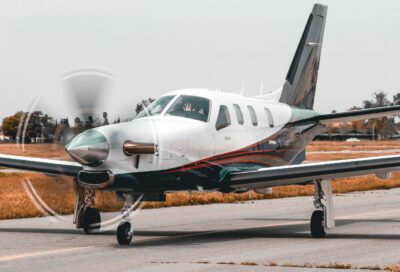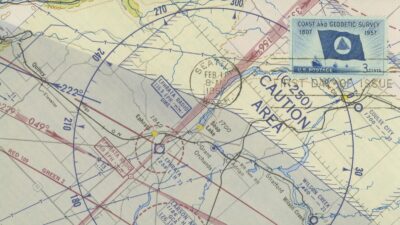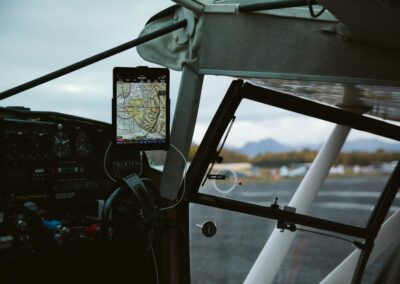Optimizing Descent Profiles for Sustainable Aviation
Introduction to Trajectory-Based Operations
The adoption of trajectory-based operations enables more efficient descent profiles and continuous descent approaches, reducing noise and emissions in airport communities. Trajectory-based operations leverage advanced air traffic management technologies and procedures to optimize flight paths, minimize fuel consumption, and enhance environmental sustainability. By employing precise navigation and automation capabilities, aircraft can follow predefined trajectories during descent, resulting in smoother, quieter, and more environmentally friendly operations.
Benefits of Efficient Descent Profiles
Efficient descent profiles offer significant benefits for both airlines and airport communities, including noise reduction, emissions reduction, and operational efficiency improvements. By optimizing descent trajectories, aircraft can reduce engine thrust, lower approach speeds, and minimize the use of auxiliary power units, resulting in quieter operations and reduced environmental impact. This not only improves the quality of life for residents living near airports but also enhances the overall sustainability of air transportation systems.
Furthermore, continuous descent approaches enable aircraft to glide smoothly from cruising altitude to the runway without the need for level segments or intermediate altitude restrictions. This reduces the need for engine power changes and thrust reverser deployments, further minimizing noise and emissions during the approach phase. Additionally, trajectory-based operations facilitate more predictable arrival times and reduced spacing requirements between aircraft, improving airspace capacity and reducing delays for passengers and airlines.
Future Prospects of Trajectory-Based Operations
With continuous advancements in aviation technology, the future of trajectory-based operations appears promising. Emerging technologies such as Blockchain and Artificial Intelligence offer opportunities to enhance the efficiency and reliability of trajectory prediction algorithms. Blockchain can provide a secure and transparent platform for sharing flight data among stakeholders, facilitating real-time decision-making and collaborative airspace management. Moreover, AI-powered predictive analytics can optimize trajectory planning based on weather conditions, air traffic congestion, and aircraft performance characteristics, enabling more adaptive and responsive airspace operations.
Environmental Impact and Sustainability
One of the primary drivers behind the adoption of trajectory-based operations is their potential to reduce the environmental impact of air transportation. By optimizing descent profiles and minimizing fuel consumption during approach and landing, trajectory-based operations contribute to lower carbon emissions and reduced fuel consumption. This aligns with the sustainability goals of both airlines and regulatory authorities, who seek to mitigate the environmental footprint of aviation while meeting growing demand for air travel. As countries worldwide commit to carbon neutrality and environmental stewardship, trajectory-based operations will play a crucial role in achieving these objectives.
Global Adoption and Standardization Efforts
As trajectory-based operations gain traction globally, efforts to standardize procedures and technologies are underway to ensure interoperability and harmonization across different airspace jurisdictions. International organizations such as the International Civil Aviation Organization (ICAO) are leading initiatives to develop global standards and recommended practices for trajectory-based operations, encompassing route planning, air traffic control procedures, and performance monitoring. This collaborative approach facilitates seamless integration of trajectory-based operations into existing airspace management frameworks, promoting safety, efficiency, and consistency in air traffic management worldwide.
Implementation and Future Perspectives
The implementation of trajectory-based operations requires collaboration between aviation stakeholders, including airlines, air traffic control authorities, and airport operators. Regulatory support, investment in infrastructure upgrades, and pilot training programs are essential to ensure the successful adoption of these advanced operational concepts. In Saudi Arabia and the UAE, where aviation infrastructure is rapidly expanding, the adoption of trajectory-based operations presents an opportunity to enhance the efficiency and sustainability of air transportation systems.
Looking towards the future, advancements in Artificial Intelligence, data analytics, and automation technologies hold the potential to further optimize trajectory-based operations and airspace management. AI-powered algorithms can analyze vast amounts of flight data to identify optimal trajectories, predict traffic patterns, and optimize airspace utilization in real-time. By embracing these technologies, aviation stakeholders can unlock new opportunities for efficiency, safety, and sustainability in air transportation, positioning themselves as leaders in the global aviation industry.
In conclusion, trajectory-based operations represent a cornerstone of modern aviation technology, enabling airlines to achieve greater efficiency, reduce environmental impact, and enhance the passenger experience. For business executives, mid-level managers, and entrepreneurs in the aviation sector, understanding the benefits and implementation strategies of trajectory-based operations is essential for driving business success and contributing to the sustainable development of air transportation systems.
—
#trajectorybasedoperations #efficientdescentprofiles #continuousdescentapproaches #noisereduction #emissionsreduction #airportcommunities #aviationtechnology #SaudiArabia #UAE #moderntechnology #businesssuccess























